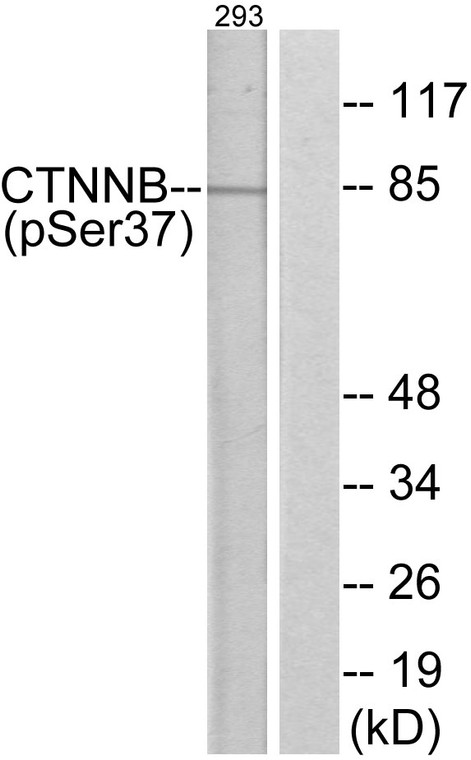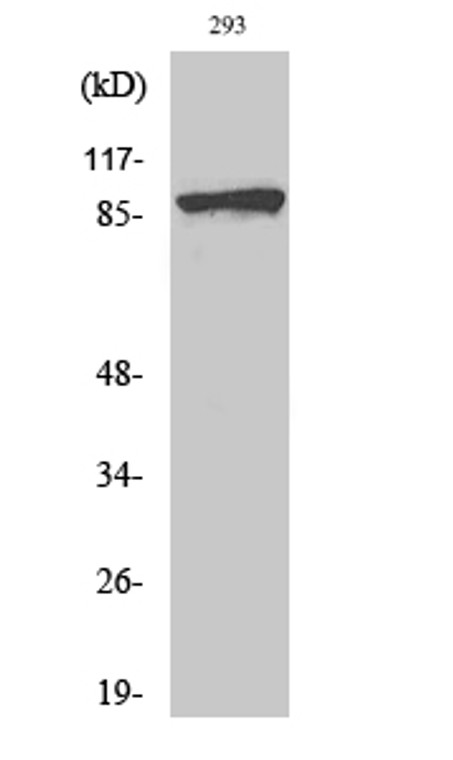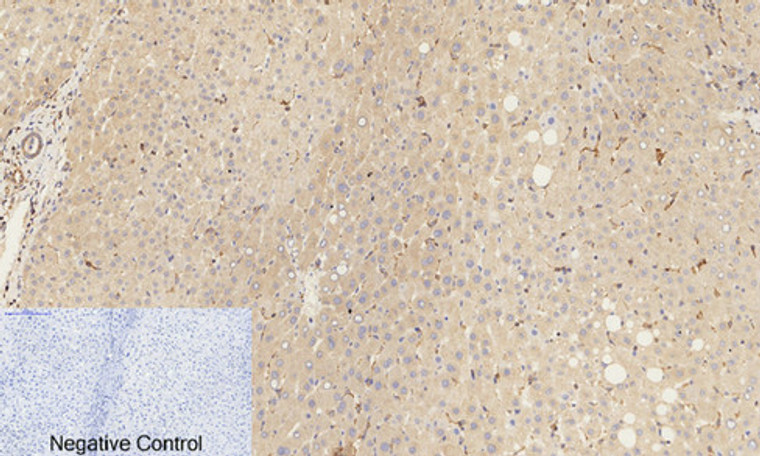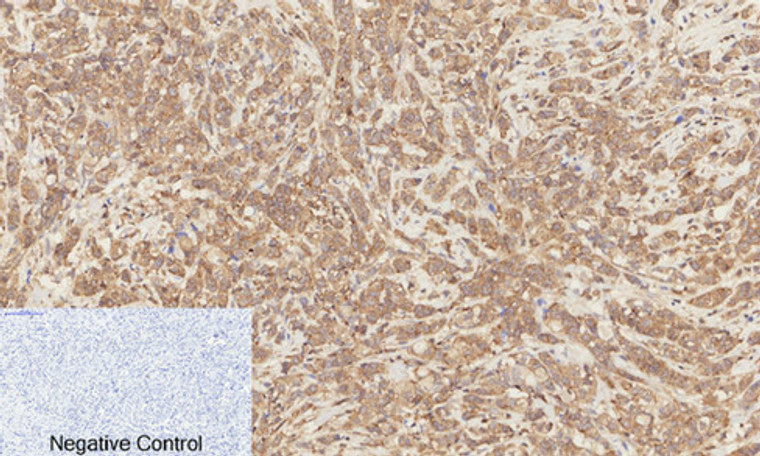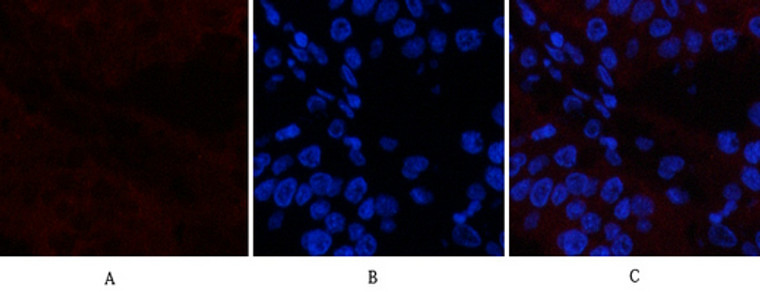-
Immunohistochemistry analysis of paraffin-embedded human breast carcinoma, using Catenin-beta (Phospho-Ser37) Antibody. The picture on the right is blocked with the phospho peptide.
-
Western blot analysis of lysates from 293 cells, using Catenin-beta (Phospho-Ser37) Antibody. The lane on the right is blocked with the phospho peptide.
-
Western blot analysis of various cells using Phospho-Catenin-Beta (S37) Polyclonal Antibody diluted at 1:2000
-
Western blot analysis of 293 cells using Phospho-Catenin-Beta (S37) Polyclonal Antibody diluted at 1:2000
-
Immunohistochemical analysis of paraffin-embedded Human-lung-cancer tissue. 1, Catenin-Beta (phospho Ser37) Polyclonal Antibody was diluted at 1:200 (4°C, overnight). 2, Sodium citrate pH 6.0 was used for antibody retrieval (>98°C, 20min). 3, Secondary antibody was diluted at 1:200 (room tempeRature, 30min). Negative control was used by secondary antibody only.
-
Immunohistochemical analysis of paraffin-embedded Human-kidney tissue. 1, Catenin-Beta (phospho Ser37) Polyclonal Antibody was diluted at 1:200 (4°C, overnight). 2, Sodium citrate pH 6.0 was used for antibody retrieval (>98°C, 20min). 3, Secondary antibody was diluted at 1:200 (room tempeRature, 30min). Negative control was used by secondary antibody only.
-
Immunohistochemical analysis of paraffin-embedded Human-liver tissue. 1, Catenin-Beta (phospho Ser37) Polyclonal Antibody was diluted at 1:200 (4°C, overnight). 2, Sodium citrate pH 6.0 was used for antibody retrieval (>98°C, 20min). 3, Secondary antibody was diluted at 1:200 (room tempeRature, 30min). Negative control was used by secondary antibody only.
-
Immunohistochemical analysis of paraffin-embedded Human-liver-cancer tissue. 1, Catenin-Beta (phospho Ser37) Polyclonal Antibody was diluted at 1:200 (4°C, overnight). 2, Sodium citrate pH 6.0 was used for antibody retrieval (>98°C, 20min). 3, Secondary antibody was diluted at 1:200 (room tempeRature, 30min). Negative control was used by secondary antibody only.
-
Immunohistochemical analysis of paraffin-embedded Human-breast-cancer tissue. 1, Catenin-Beta (phospho Ser37) Polyclonal Antibody was diluted at 1:200 (4°C, overnight). 2, Sodium citrate pH 6.0 was used for antibody retrieval (>98°C, 20min). 3, Secondary antibody was diluted at 1:200 (room tempeRature, 30min). Negative control was used by secondary antibody only.
-
Immunofluorescence analysis of human-kidney tissue. 1, Catenin-Beta (phospho Ser37) Polyclonal Antibody (red) was diluted at 1:200 (4°C, overnight). 2, Cy3 labled Secondary antibody was diluted at 1:300 (room temperature, 50min).3, Picture B: DAPI (blue) 10min. Picture A:Target. Picture B: DAPI. Picture C: merge of A+B
-
Immunofluorescence analysis of human-kidney tissue. 1, Catenin-Beta (phospho Ser37) Polyclonal Antibody (red) was diluted at 1:200 (4°C, overnight). 2, Cy3 labled Secondary antibody was diluted at 1:300 (room temperature, 50min).3, Picture B: DAPI (blue) 10min. Picture A:Target. Picture B: DAPI. Picture C: merge of A+B
-
Immunofluorescence analysis of human-liver-cancer tissue. 1, Catenin-Beta (phospho Ser37) Polyclonal Antibody (red) was diluted at 1:200 (4°C, overnight). 2, Cy3 labled Secondary antibody was diluted at 1:300 (room temperature, 50min).3, Picture B: DAPI (blue) 10min. Picture A:Target. Picture B: DAPI. Picture C: merge of A+B
-
Immunofluorescence analysis of human-liver-cancer tissue. 1, Catenin-Beta (phospho Ser37) Polyclonal Antibody (red) was diluted at 1:200 (4°C, overnight). 2, Cy3 labled Secondary antibody was diluted at 1:300 (room temperature, 50min).3, Picture B: DAPI (blue) 10min. Picture A:Target. Picture B: DAPI. Picture C: merge of A+B


